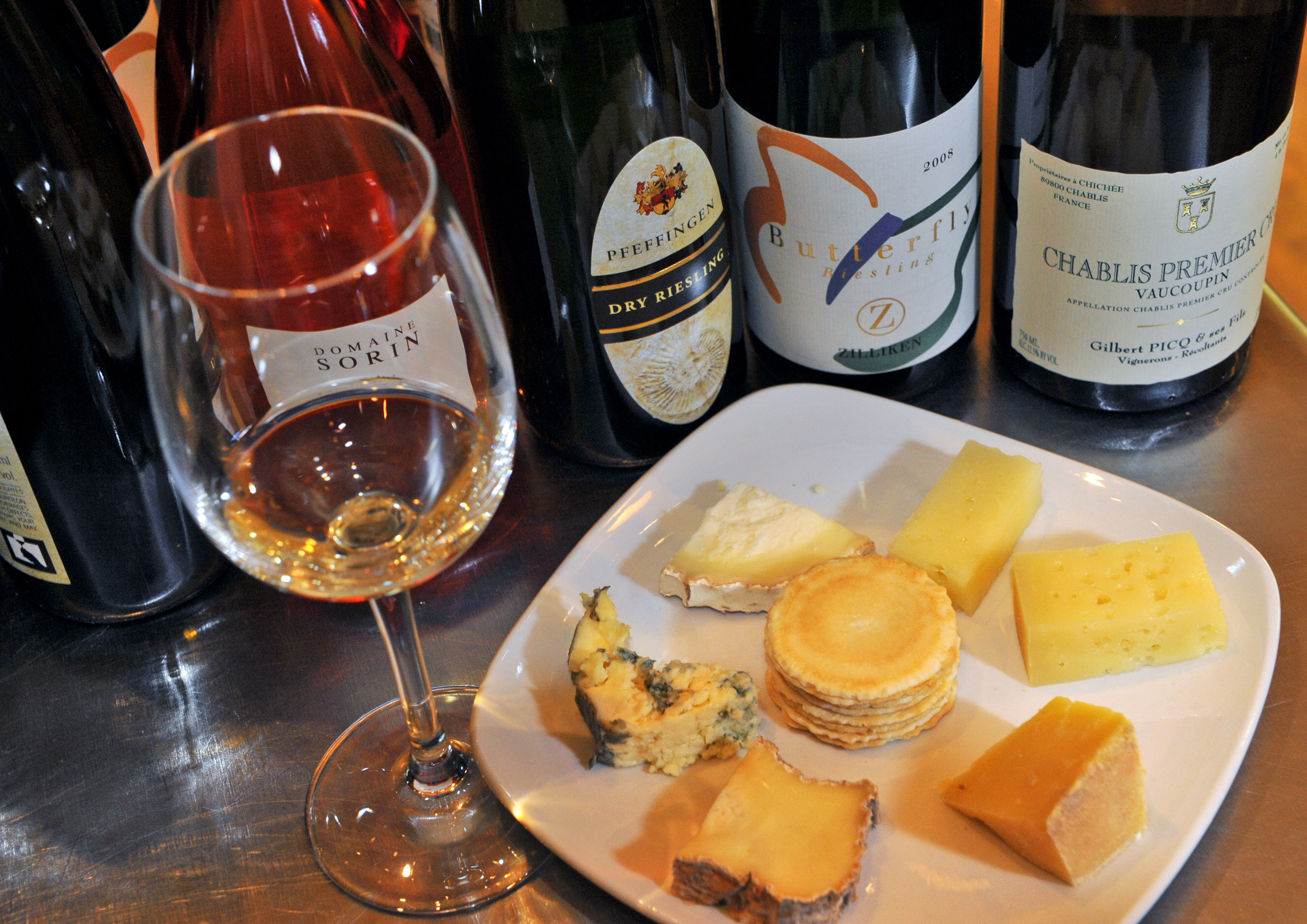
There are ways to conduct yourself during a wine and cheese tasting party and ways to conduct yourself during a wine and cheese tasting experiment. Only one of them involves sampling the offerings “and then expectorat[ing] all of it to assess the intensity of several attributes.” If you had trouble determining the right venue for that behavior, it might explain why your social calendar has been a bit light of late.
It’s in the lab, of course, that the chew, sip and spit approach—described in a study just published in the Journal of Food Science—has long been practiced as the best available method to determine proper pairings. The problem is that if the way people eat and drink in an experimental setting is—fortunately—not the way they eat and drink in the real world, the taste experience might differ too.
There are a lot of reasons it’s never been easy to develop a better laboratory taste test for wine and cheese pairings. For starters, outside of the lab, tasting food and drink is a dynamic experience, one that changes slowly over the course of an evening, with each swallow of wine or bite of cheese affecting the ones that come after it. What’s more, when you’re talking about wine, there’s the question of the alcohol, which means that you might react to your first sip with words like, “smoky, woody, good finish” and your last sips with “S’good, s’really good…got any more of this?”
The authors of the Journal of Food Science study—led by food scientist Mara Galmarini of the National Scientific and Technical Research Council in Buenos Aires and Pascal Schlich of the National Institute for Agronomical Research in Dijon, France—tried to come up with a way to capture or control for more of that in the lab. They began with a selection of four types of wine: a sweet white Pacharenc, a dry white Sancerre, a spicy red Bourgogne and a subtler red Madiran. The cheeses were a semi-hard Comté, a hard Crottin de Chavignol, a creamy Epoisses and a semi-soft Roquefort. Finally, they recruited a small sample group of 31 subjects who volunteered for the less-than-hardship duty of sampling that menu over the course of five one-hour tasting sessions, held on separate days.
In the first session, the volunteers sampled the wine alone. The red wines were served at a temperature of 64º F (18º C) and the whites at 50º F (10º C). The subjects were instructed to take a sip, hold it in their mouths and click a screen that presented them with 11 different flavor characteristics, including sour, sweet, bitter, spicy, herby and yellow fruit. They could click as many of them as they wanted as the dominant flavor changed and could swallow whenever they chose.
Immediately afterward, another screen appeared that allowed them to rate the wine on a scale from “I did not like it at all” to “I liked it very much.” Each wine was supposed to be tasted and rated three times and each glass contained just three centiliters (about 1 fluid oz.) of wine—plenty for the experiment but too little for a buzz.
In the following sessions, the cheese was incorporated into the tasting protocol and was served in equally small and precise portions. Each of the four cheeses was sampled before and after sips of each of the four wines, which meant 16 different wine-cheese combinations. The wines were rated in the same way they were in the first experiment.
Overall, the researchers found, each cheese influenced the dominant taste of each wine in different ways that were more or less consistent across the 31 volunteers. There were more detectable citrus notes in the Sancerre, for example, after the Epoisses cheese. Roquefort increased the dominance of the red fruit notes in the Bourgogne and decreased the astringency—probably because the fat in the cheese coats the mouth, reducing tannin-induced drying. The red Madiran was the most cheese-sensitive of all, with the wine’s aromatic qualities increasing and its sour notes decreasing after any of the four cheeses.
Across the entire experiment, the effect of the cheese was cumulative. Rather than the wine palate becoming overwhelmed by a mix of cheese flavors, it actually seemed to become more sensitive—good news for hosts who like to save their best wines for last.
Galmarini, Schlich and their colleagues do not pretend that their study is the last word on wine and cheese pairings, or even on just the four wines and four cheeses they chose. Rather, they were interested simply in testing their methods, to see if they might have created something that other food scientists and culinary experts can develop further. On that score they succeeded. The rest of us—experts more in the enjoyment than in the creation of wine and cheese pairings—will be the real beneficiaries.
More Must-Reads From TIME
- Dua Lipa Manifested All of This
- Exclusive: Google Workers Revolt Over $1.2 Billion Contract With Israel
- Stop Looking for Your Forever Home
- The Sympathizer Counters 50 Years of Hollywood Vietnam War Narratives
- The Bliss of Seeing the Eclipse From Cleveland
- Hormonal Birth Control Doesn’t Deserve Its Bad Reputation
- The Best TV Shows to Watch on Peacock
- Want Weekly Recs on What to Watch, Read, and More? Sign Up for Worth Your Time
Write to Jeffrey Kluger at jeffrey.kluger@time.com